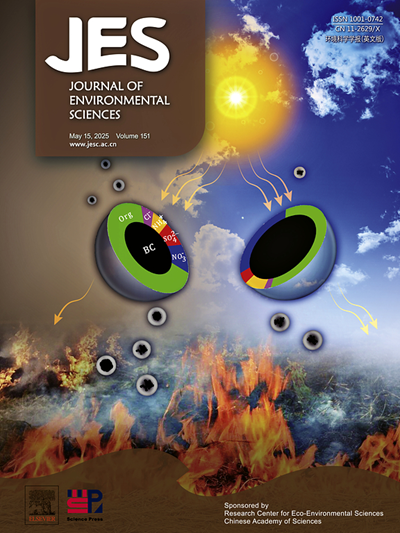Advancing anti-freezing hydrogel electrolyte based on deep eutectic solvent for wide temperature range aqueous zinc-ion battery
IF 5.9
2区 环境科学与生态学
Q1 ENVIRONMENTAL SCIENCES
引用次数: 0
Abstract
Hydrogels based on Deep Eutectic Solvents (DES) demonstrate remarkable anti-freezing, resilience, and toughness, presenting a promising avenue to the operation of aqueous zinc-ion batteries under extreme conditions. A gel electrolyte capable of operating over a wide temperature range is developed based on a DES comprising 1 mol/kg (m) Zn(ClO4)2 + 3.5 m Mg(ClO4)2. Spectral characterization confirms the synergistic influence of both anions and cations on the freezing point of the DES. With four hydrogen bond (HB) acceptors, Mg2+ exhibits strong electrostatic attraction towards the O atoms of H2O, while ClO4− forms numerous HBs with H2O molecules. This dual interaction allows for precise adjustment of the chemical environment around the H and O atoms of H2O, resulting in an exceptionally low freezing point of -116.92 °C for the DES. The gel electrolyte derived from this DES demonstrates an impressive ionic conductivity of 0.285 mS/cm at -70 °C. Leveraging its excellent low-temperature performance and compatibility with a zinc anode, the flexible Zn-Mn battery constructed with this electrolyte exhibits robust electrochemical performance at low temperatures. Specifically, at -70 °C, it achieves a high specific capacity of 76.83 mAh/g, displays excellent rate capability, and maintains stable cycling performance. Moreover, the Zn-Mn battery operates reliably across a broad temperature range from -70 to 80 °C. This study presents innovative insights for advancing Zn-Mn batteries capable of efficient operation across diverse environmental conditions, thereby opening new avenues for their development.

基于深度共晶溶剂的宽温度范围锌离子电池抗冻水凝胶电解质的研制
基于深度共晶溶剂(DES)的水凝胶具有出色的抗冻性、弹性和韧性,为极端条件下的水性锌离子电池的运行提供了一条有前途的途径。以1 mol/kg (m) Zn(ClO4)2 + 3.5 m Mg(ClO4)2为基料,研制了一种工作温度范围宽的凝胶电解质。光谱表征证实了阴离子和阳离子对DES凝固点的协同影响。Mg2+具有4个氢键(HB)受体,对H2O的O原子具有很强的静电吸引力,而ClO4−与H2O分子形成大量的HBs。这种双重相互作用允许精确调节H2O的H和O原子周围的化学环境,从而使DES的凝固点极低,为-116.92°C。由该DES衍生的凝胶电解质在-70°C时显示出令人惊讶的0.285 mS/cm的离子电导率。利用其优异的低温性能和与锌阳极的兼容性,用这种电解质构建的柔性锌锰电池在低温下表现出强大的电化学性能。具体而言,在-70°C时,其比容量达到76.83 mAh/g,具有出色的倍率能力,并保持稳定的循环性能。此外,锌锰电池在-70至80°C的宽温度范围内可靠地工作。本研究为推进锌锰电池在不同环境条件下的高效运行提供了创新的见解,从而为其发展开辟了新的途径。
本文章由计算机程序翻译,如有差异,请以英文原文为准。
求助全文
约1分钟内获得全文
求助全文
来源期刊

Journal of Environmental Sciences-china
环境科学-环境科学
CiteScore
13.70
自引率
0.00%
发文量
6354
审稿时长
2.6 months
期刊介绍:
The Journal of Environmental Sciences is an international journal started in 1989. The journal is devoted to publish original, peer-reviewed research papers on main aspects of environmental sciences, such as environmental chemistry, environmental biology, ecology, geosciences and environmental physics. Appropriate subjects include basic and applied research on atmospheric, terrestrial and aquatic environments, pollution control and abatement technology, conservation of natural resources, environmental health and toxicology. Announcements of international environmental science meetings and other recent information are also included.
 求助内容:
求助内容: 应助结果提醒方式:
应助结果提醒方式:


